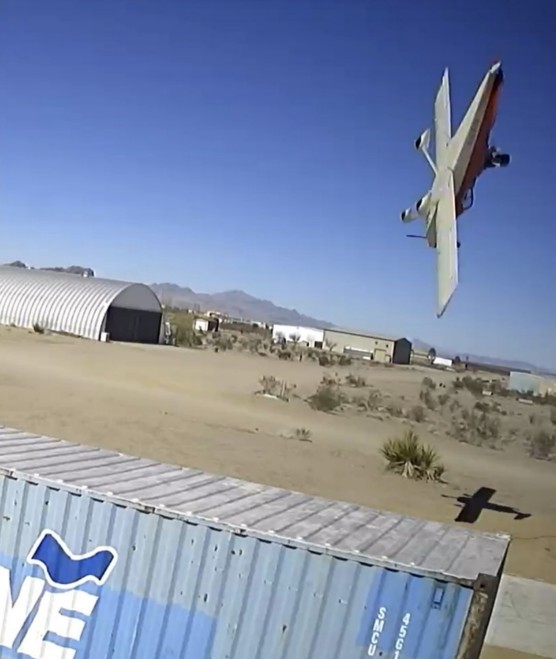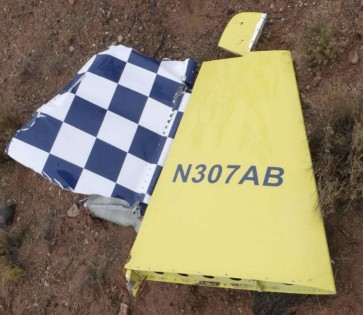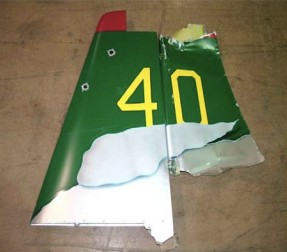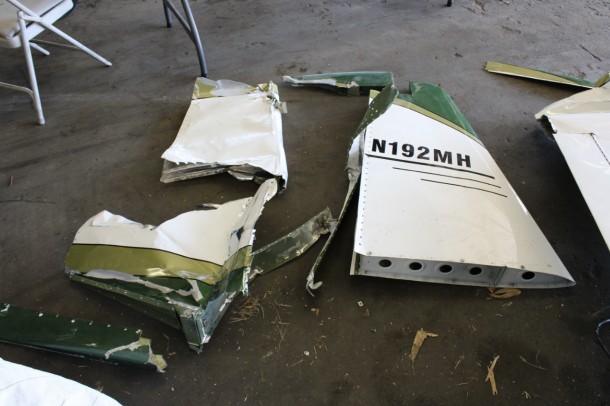
Figure 1. Video image of the airplane before impacting the ground.
A Van’s RV-7A airplane impacted terrain after experiencing an in-flight breakup. Security video captured the airplane in a steep nose-down descent with the vertical stabilizer and rudder having separated from the empennage. Onboard data revealed that immediately before the breakup, the pilot entered a split-S maneuver at an airspeed that exceeded the manufacturer’s published entry airspeed for that maneuver; the airplane rolled to an inverted position and pitched toward the ground, causing the airspeed to increase dramatically. The last recorded data point, at an altitude about 3,199 ft above ground level, showed the airspeed was 262 knots true airspeed—well above the published never-exceed speed of 200 knots. The high airspeed allowed rudder flutter to occur, resulting in an in-flight breakup and subsequent impact with terrain. (WPR22FA100)

Figure 2. WPR16FA036’s vertical stabilizer and upper rudder.
A Van’s RV-7 experienced an in-flight breakup and impacted terrain. Recovered photographic information showed the pilot performed a split-S maneuver; this maneuver likely caused the airplane’s speed to increase rapidly. The airspeed likely increased above Vne and excited the rudder flutter mode, causing the vertical stabilizer and rudder to separate due to overload, which induced a rapid pitch-over from which the pilot was unable to recover. (WPR16FA036)

Figure 3. A10O0018’s rudder.
The Transportation Safety Board of Canada (TSB) investigated an accident involving a Van’s RV-7A airplane that was flying in tandem with another airplane (both conducting a series of aerobatic maneuvers) when the pilot of the lead airplane lost control and impacted terrain in a wooded area. The TSB determined that during the maneuvering sequence, the accident airplane’s indicated airspeed reached 234 knots (its true airspeed would have been even higher), exceeding the 124 knot maneuvering speed and the 200 knot Vne, which then induced flutter and resulted in the vertical stabilizer and parts of the rudder separating from the empennage during flight. The airplane exceeded the maximum aerobatic gross weight, and the rudder had not been rebalanced after being painted. The extra weight of paint aft of the rudder hinge line made the rudder susceptible to flutter at a lower speed than designed. (A10O0018, Transportation Safety Board of Canada)

Figure 4. WPR22FA266’s separated vertical stabilizer and rudder.
A noninstrument-rated pilot and student-pilot-rated passenger were en route during a cross-country flight in a Van’s RV-9A when they encountered known instrument meteorological conditions. The pilot became spatially disoriented and lost airplane control. During the rapid uncontrolled descent, the airplane’s airspeed exceeded Vne by 70–80 knots true airspeed, thereby causing rudder flutter and a subsequent in-flight breakup before impacting terrain. (WPR22FA266)